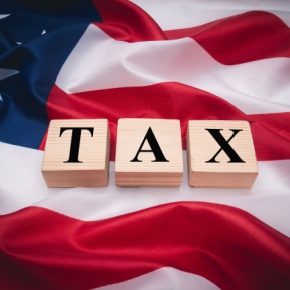Jeremy Schwartz, CFA, Executive Vice President, Global Head of Research
We recently had the great pleasure of hosting Richmond Federal Reserve (Fed) President Tom Barkin with Wharton Professor Jeremy Siegel on our Behind the Markets podcast.
Professor Siegel commented that health care and emergency workers are first in line for praise during this pandemic, with the Fed close behind due to the measures they’ve taken to support the health and functioning of our economy.
The operational elements of reopening businesses have commenced in all 50 states, with some even accelerating the reopening under growing pressures. But many consumers are still scared. Businesses operating below capacity will lose money, not only from lack of customers but also because of the additional costs of opening and preparing their locations for new health and public safety guidelines. Nonetheless, they hope to keep their customers and thrive as consumer confidence returns.
Economic Signals
Barkin is watching retail activity in China and South Korea closely for signals of what to expect. Both countries have been open for three months and retail activity, he notes, is still 25% below pre-virus levels.
Professor Siegel discussed the 25% increase in the M1 money supply since March 9, and asked Barkin how the Fed would respond to potential inflation pressures as the economy reopens and consumer demand begins to revive.
While it is hard to envisage inflation now, with the negative April Consumer Price Index (CPI) and other deflationary signs, Barkin agrees the Fed should always be looking toward the horizon. Barkin commented that it is instructive to look back over the last 10 years, when a lot of liquidity was also put into the system. The increased money supply just sat as excess reserves and did not find its way into the real economy.
But Barkin admitted that this time might be different. He claimed that since the Fed pays interest on excess reserves, banks will keep all the funds from quantitative easing (QE) on bank balance sheets and prevent it from being lent out to the real economy. He noted the Fed could very well let its balance sheet roll off and bring it back down if there are these inflation pressures over time.
Fed Chair Jerome Powell emphasizes a symmetric 2% inflation target, so Professor Siegel inquired whether Barkin thinks inflation will run hot if the Fed continues to keep rates low.
Fed Rates
Barkin has a hard time seeing economic growth returning and the Fed keeping real interest rates at zero. He thinks there is a natural rate of real interest and that it should be above zero. He is also worried about keeping rates at the zero lower bound for extended periods and thinks other pernicious impacts may result from keeping rates at zero too long.
Professor Siegel believes that the Fed will be forced to raise rates but keep those rates below the rate of inflation.
If the Fed has to raise rates to 2%–3%, right now the Fed is buying a portfolio of bonds that have much lower interest rates. The Fed has generally been a source of healthy ‘profits’ to the Treasury Department given the interest earning on their balance sheet and a low cost of funds. This spread paid back to the Treasury may come down and put more pressure on our deficit.
How Much Economic Damage Is Temporary versus Permanent?
Right now, the pandemic is mostly impacting the lower wage workers in retail, hospitality and travel-related industries. Barkin sees the economy reopening fairly slowly, so he is focused on how to retrain workers. He does not see infrastructure projects being a solution here.
Rather, we are likely to need more help in home health care and contact tracing, and new online learning practices.
Barkin wants to see certificate training programs made available to more people. As an example of what we can do there, Federal Pell grants are not available for certificate programs and he would like to see that change.
The employment-to-population ratio last month was at its lowest level since 1973. That was when women increasingly entered the workforce. We’ve also had rising labor force participation from people over age 55 since then.
With child daycare shut down and camps closed, and the virus disproportionately affecting the elderly, Barkin sees pressures on the labor force which will decrease the productive capacity of our economy.
On the positive side, he claims there are new productivity enhancements coming from technology, like telehealth programs that are being used right now and proving to be quite effective.
We appreciate President Barkin for taking time ahead of the Memorial Day holiday to share his thoughts with our program and thank him for all the Fed is doing to combat the impacts of this unprecedented economic situation. Please listen to the full conversation with President Barkin and Professor Siegel below.
Photo Credit: Gayle Nicholson via Flickr Creative Commons



